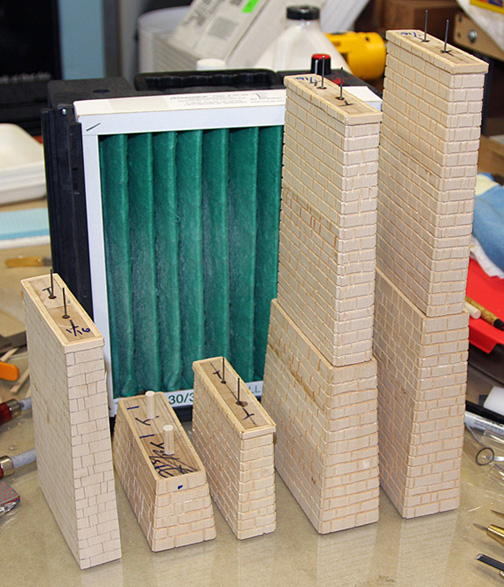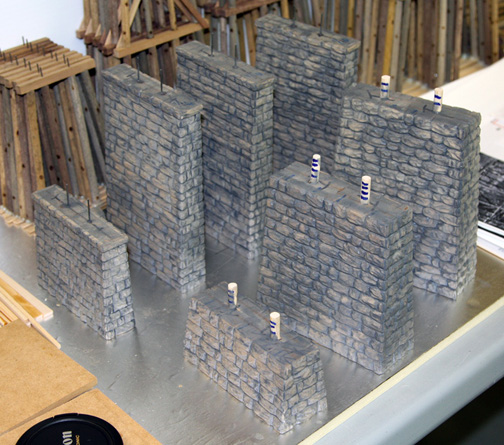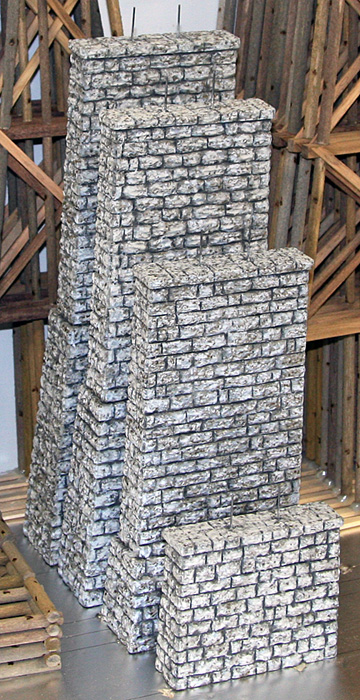
We needed 34 bents, 4 cut-stone piers, and 3 crib dams. The bents would be topped with 2, 13-foot stringers with cross-ties and track on top of them.
Our logs were made from .25" and .3125" diameter birch dowels. The dowels were textured with an abrasive bit (second dowel from the left in the photo on the left), and then colored with dry pigment in alcohol washes and weathered with india ink in alcohol washes. Cut branch scars were made with a wood burning pen.
A woodworker friend of Charlie Taylor's milled hardwood for the beams, cross-bracing, and stringers. The beams were cut to the 4 sizes needed for the bents and they were mortised for the splay (batter) needed in the log alignment. They were also drilled for the steel pins which we were going to use to connect the logs and beams.
The photos show the smooth hardwood before and after texturing and weathering.
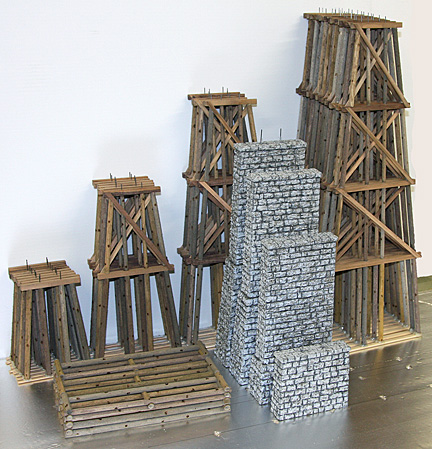
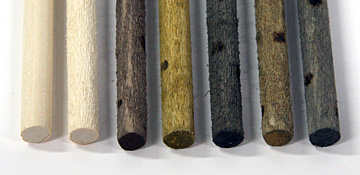
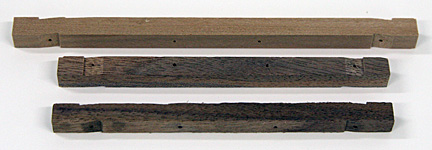
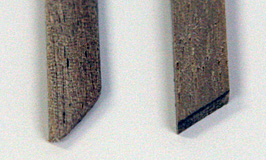
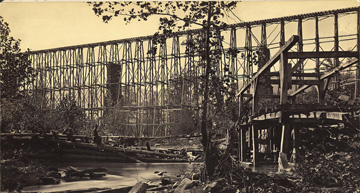
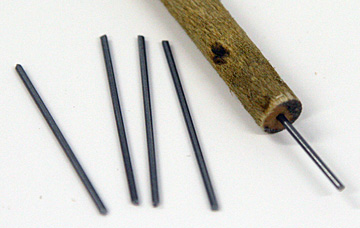
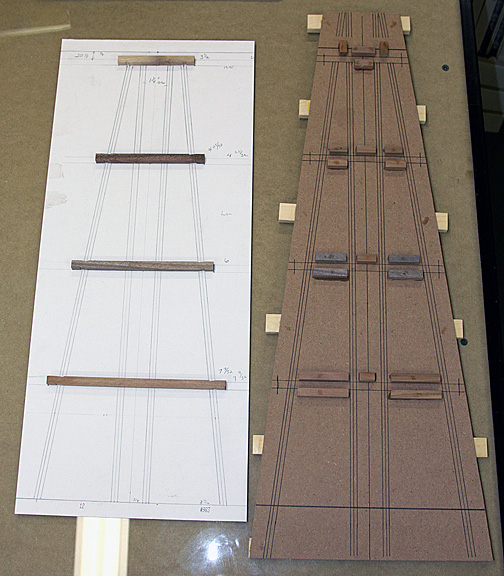
Bottom tier logs were all cut extra long to allow for terrain variance and then temporarily secured to a footer for safe transport.
Pins protruded at the top of each bent to accept the horizontal stringers added later.
The full set of bents and crib dams are seen below.
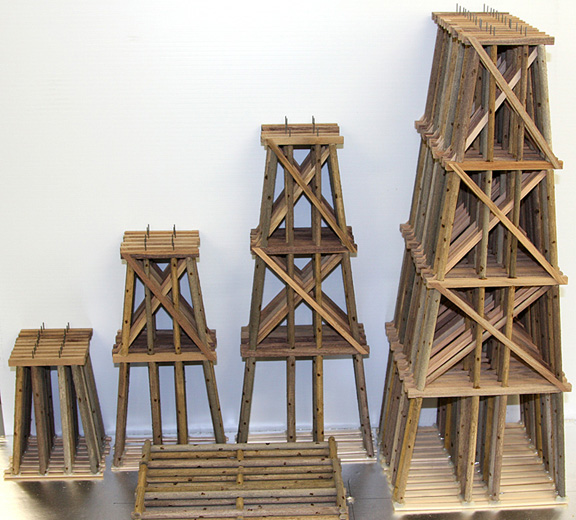
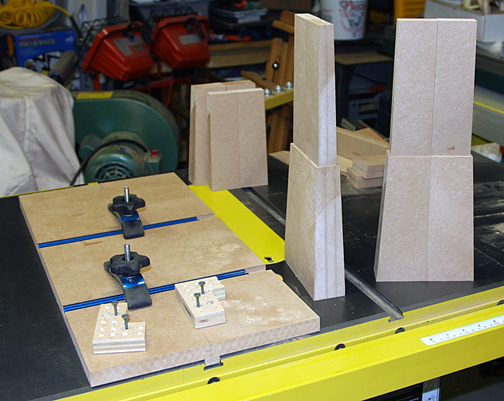
At left, the piers (top and bottom sections) have had their first application of acrylic paint and medium. The finished piers are seen below.
